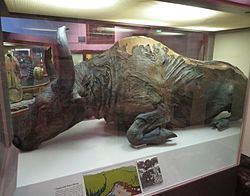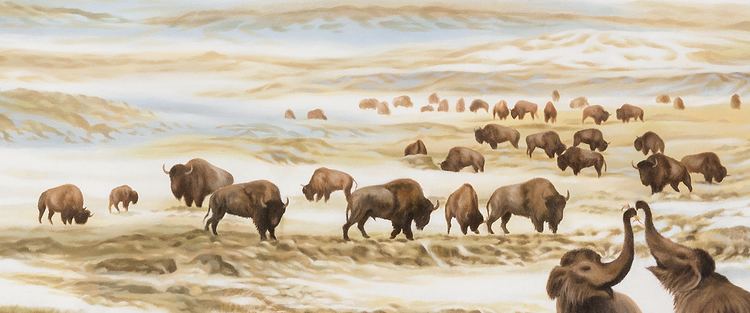Rank Species | Genus Bison Higher classification Bison | |
Similar Bison, Mammal, Bison antiquus, Bison latifrons, Woolly rhinoceros | ||
The steppe bison or steppe wisent (Bison priscus) is an extinct species of bison that was once found on the mammoth steppe where its range included Europe, Central Asia, Japan, Yakutia, Beringia, and northwest Canada during the Quaternary.
Contents
Evolution

It is believed to have evolved somewhere in South Asia, which would have it appearing at roughly the same time and region as the aurochs with which its descendants are sometimes confused.

The steppe bison became extinct in the early Holocene, as it was replaced in Europe by the modern bison B. bonasus, which is a hybrid between B. priscus and aurochs, and in America by a sequence of species (first Bison latifrons, and somewhat later, Bison antiquus) culminating in the modern American bison. European cave paintings appear to depict both B. bonasus and B. priscus.

The steppe bison was over 2 m tall at the shoulder, and resembled the modern bison species, reaching 900 kg (2,000 lb) in weight. The tips of the horns were a meter apart, the horns themselves being over half a meter long.
Discoveries
Steppe bison appear in cave art, notably in the Cave of Altamira and Lascaux, and the carving Bison Licking Insect Bite, and have been found in naturally ice-preserved form.
Blue Babe is the mummy of a 36,000-year-old male steppe bison which was discovered north of Fairbanks, Alaska, in July 1979. The mummy was noticed by a gold miner who named the mummy Blue Babe - "Babe" for Paul Bunyan's mythical giant ox, permanently turned blue when she was buried to the horns in a blizzard. (Blue Babe's own bluish cast was caused by a coating of vivianite, a blue iron phosphate covering much of the specimen.) Blue Babe is also frequently referenced when talking about scientists eating their own specimens: the research team that was preparing it for permanent display in the University of Alaska Museum removed a portion of the mummy's neck, stewed it, and dined on it to celebrate the accomplishment.
In 2011, a 9,300-year-old mummy was found at Yukagir in Siberia.
Specimen found in Japan were named as "Hanaizumimori cattle" Leptobison hanaizumiensis, and bisons possibly herded with aurochs.
